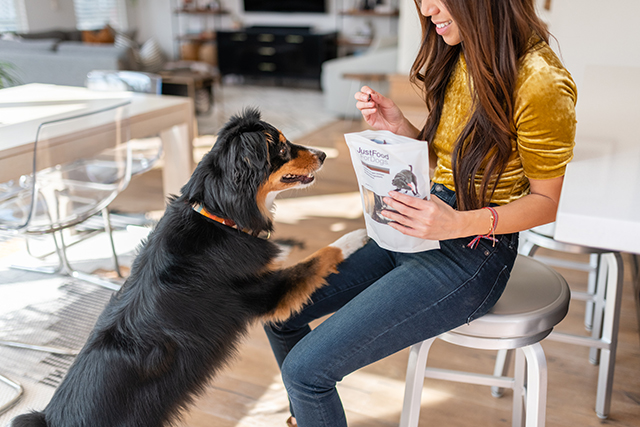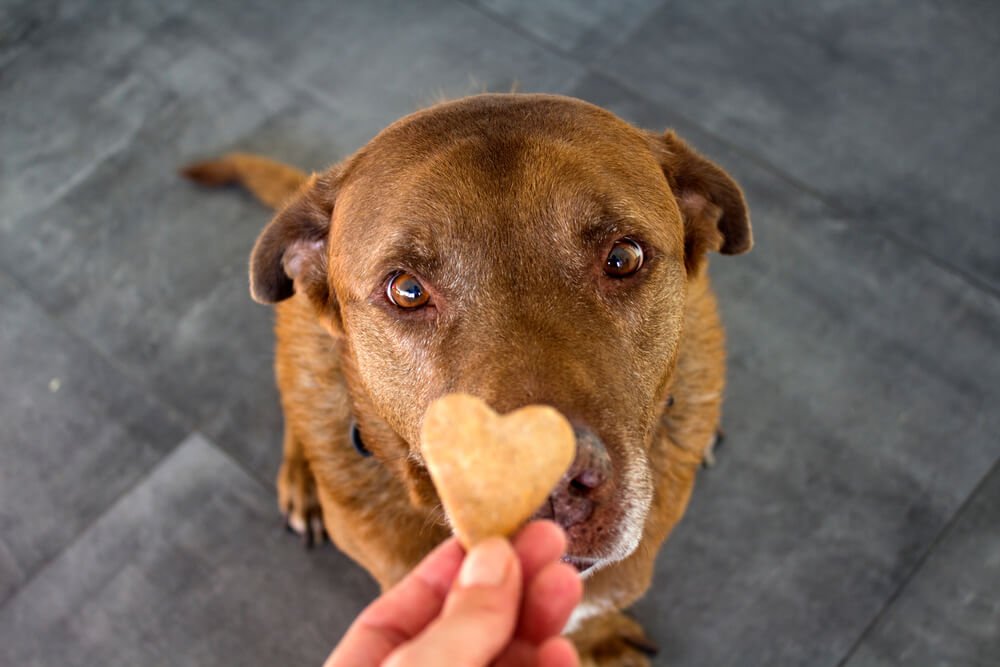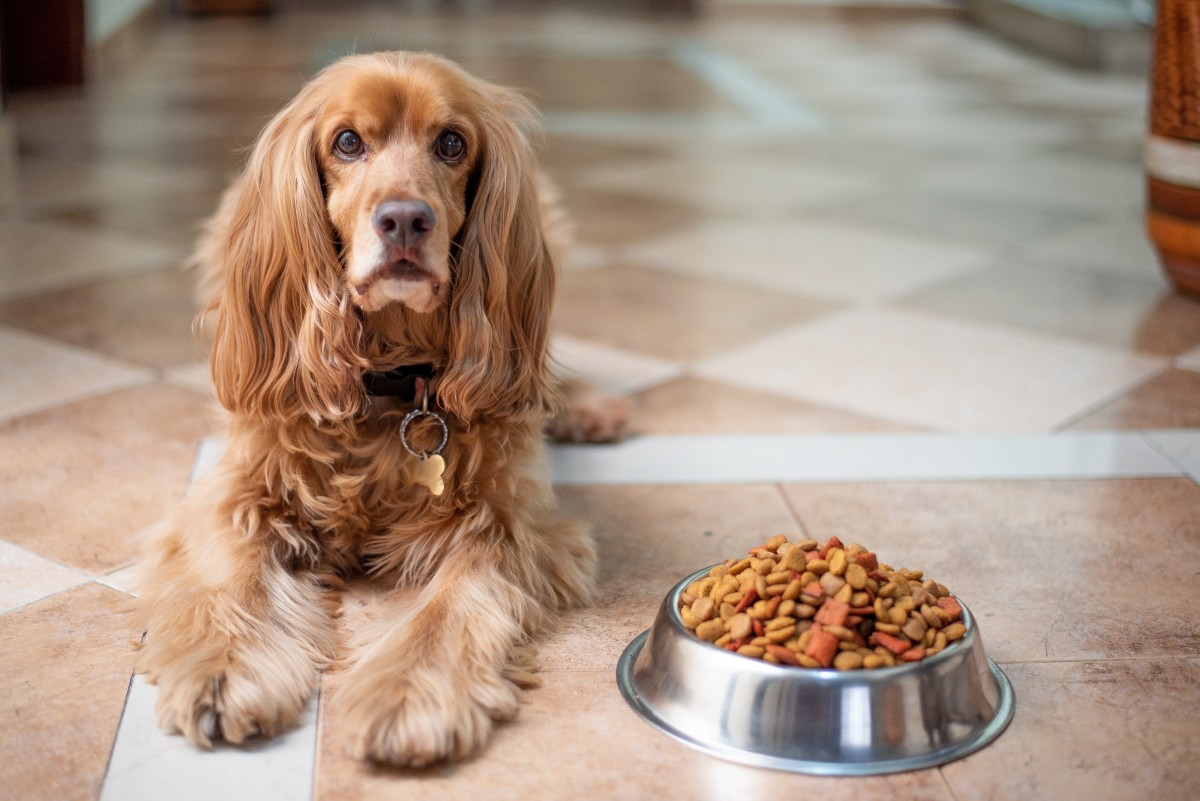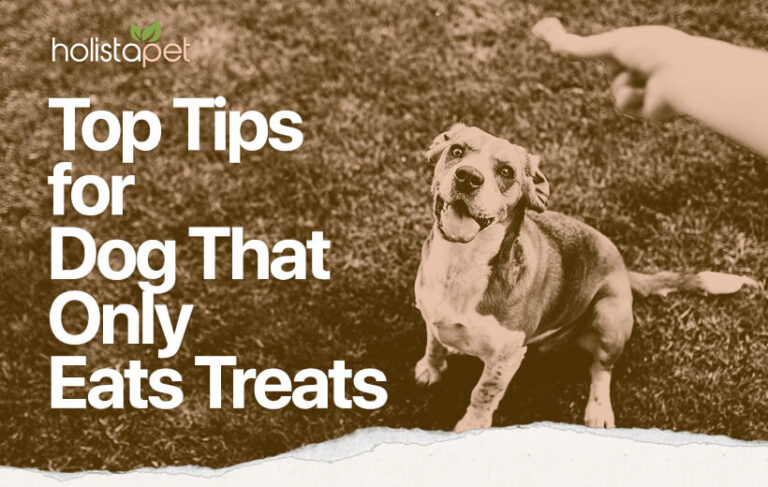If your dog won’t eat his food but will eat treats, it could be due to food preferences, dental issues, or an underlying health problem. It’s important to consult with a veterinarian to rule out any medical issues and to discuss possible dietary changes.
When a dog refuses to eat his regular food but eagerly consumes treats, it can be concerning for pet owners. There are several potential reasons for this behavior, ranging from simple preferences to more serious health issues. Understanding the underlying cause can help address the problem effectively and ensure your dog’s overall well-being.
Some dogs may be picky eaters and prefer the taste or texture of treats over their regular food. Dental issues, such as tooth pain or gum disease, can also make it uncomfortable for a dog to eat hard kibble. Additionally, certain medical conditions like gastrointestinal problems or infections could affect a dog’s appetite. It is essential to monitor your dog’s behavior and consult a veterinarian to determine the best course of action.

Credit: www.justfoodfordogs.com
Possible Reasons
If your dog refuses to eat their food but readily consumes treats, there could be several underlying reasons. It could be due to a change in appetite, dental issues, anxiety, or the dog simply preferring the taste and texture of treats.
It’s important to consult with a veterinarian to rule out any medical conditions and find the best approach to resolve this issue.
Finicky Eating Habits
Some dogs are simply known for their finicky eating habits. Just like humans, they can be picky about what they eat and may refuse their regular food while still enjoying treats. This behavior can be attributed to their individual tastes and preferences.
Boredom With The Same Food
Dogs, like humans, can get bored with eating the same food day in and day out. If your dog refuses to eat his regular food but readily consumes treats, it could indicate that he craves variety and finds his regular meals uninteresting.
Health Issues
If your dog’s refusal to eat his food is accompanied by other symptoms such as weight loss, vomiting, or diarrhea, there could be underlying health issues at play. Common health problems that can affect a dog’s appetite include dental problems, gastrointestinal issues, and allergies. It is crucial to consult a veterinarian to rule out any medical conditions.
Behavioral Issues
In some cases, a dog’s refusal to eat his food may stem from behavioral issues. Anxiety, stress, and changes in routine or environment can impact their appetite. Additionally, if your dog has been spoiled with too many treats or table scraps, he may develop a preference for those over his regular meals.
Preference For Treats
Dogs have a strong sense of smell, and treats often have enticing aromas that make them more appealing than regular dog food. If your dog consistently favors treats over his food, it could be due to the taste, texture, or high reward value of treats. It is essential to ensure a balanced diet for your pet despite his preference for treats.
Solutions And Strategies
When your dog refuses to eat his food but happily indulges in treats, it can be frustrating and concerning for pet owners. However, there are several solutions and strategies that can be employed to encourage your dog to eat his regular meals. Below, we explore some effective approaches to address this issue.
Try Different Types Of Food
If your dog is turning his nose up at his regular kibble, consider experimenting with different types of food. This may include wet food, raw food, or even homemade meals. Varying the texture and flavor of the food can entice your dog to eat, especially if he has grown bored with his current diet.
Mix In Tasty Additions
Another strategy to encourage your dog to eat his food is to mix in tasty additions. This can include incorporating small amounts of cooked meat, vegetables, or even a bit of low-sodium broth into his meal. These enhancements can add flavor and appeal to the food, making it more enticing for your pet.
Establish A Feeding Routine
Setting a consistent feeding routine can also help address your dog’s reluctance to eat his meals. Dogs often thrive on routine, so feeding him at the same times each day can create a sense of security and predictability that may encourage him to eat when his food is provided.
Consult With A Veterinarian
If your dog’s refusal to eat persists, it’s important to consult with a veterinarian. Professional guidance can help identify any underlying health issues or behavioral concerns that may be contributing to his reluctance to eat. The vet can provide tailored recommendations to address the specific needs of your dog.
Train And Reward With Treats
While your dog may be resistant towards his regular food, utilizing treats in training can be a powerful tool. You can use small portions of his regular treats as rewards for eating his meals, creating positive associations with the food. However, it is important to maintain a balance and not rely solely on treats to entice him to eat.
Common Mistakes To Avoid
When your dog refuses to eat his food but eagerly devours treats, it can be frustrating and concerning. There are several common mistakes that dog owners make in this situation that can exacerbate the issue rather than resolve it. By understanding and avoiding these mistakes, you can help your dog develop healthier eating habits and ensure his nutritional needs are met. Let’s take a look at some of the common mistakes to avoid when dealing with a picky eater.
Force-feeding Or Punishment
Attempting to force-feed or punish your dog for not eating his regular food can create negative associations with mealtime, leading to further reluctance to eat. It’s important to create a positive and relaxed environment around feeding time. Avoid using force or punishment to try to coerce your dog into eating his meals.
Free Feeding Or Overfeeding
Leaving food out all day or overfeeding your dog with excessive treats can lead to picky eating habits. It’s important to establish a regular feeding schedule and portion control to encourage balanced and healthy eating habits. Avoid free feeding and be mindful of the treats your dog receives throughout the day.
Inconsistent Feeding Schedule
Irregular feeding times can disrupt your dog’s appetite and eating routine. Establishing a consistent feeding schedule can help regulate your dog’s hunger and encourage him to eat his regular meals. Ensuring meals are fed at the same time each day can help establish a routine and promote healthy eating habits.
Neglecting Dental Health
Poor dental health can contribute to discomfort while eating, leading to reluctance to consume dry kibble. Regular dental care and check-ups are essential for maintaining your dog’s oral health and ensuring he can comfortably eat his regular food. Neglecting dental health can contribute to picky eating behaviors.
Giving In To Begging
Yielding to your dog’s begging for high-value treats can reinforce picky eating habits. It’s important to set boundaries and not give in to begging behaviors. By rewarding only appropriate eating behaviors, you can help encourage a healthier approach to mealtimes.

Credit: www.raisedrightpets.com
Creating A Positive Feeding Environment
Encourage your dog to eat by creating a positive feeding environment. If your dog refuses to eat his food but happily devours treats, try these tips to make mealtime more appealing.
Creating a positive feeding environment is crucial for encouraging your dog to eat his food regularly. If you find that your dog won’t eat his food but will eat treats, it may be time to make some changes. By following these simple tips, you can help your dog develop a healthy relationship with his meals.Choose The Right Bowl And Location
Choosing the right bowl and location for your dog’s meals can make a big difference in his appetite. Opt for a bowl that is shallow and wide, as this can make it easier for your dog to access his food. Additionally, consider the material of the bowl – some dogs prefer stainless steel or ceramic bowls over plastic.When it comes to the location, find a quiet place in your home where your dog feels comfortable eating. Avoid feeding your dog in high-traffic areas or places with loud noises that may distract him.Eliminate Distractions
Distractions during mealtime can easily deter your dog from eating his food. Eliminate any potential distractions by feeding your dog in a calm and quiet environment. This means turning off the TV and removing any toys or other pets from the feeding area.Creating a dedicated space for your dog’s meals can help him focus on eating and prevent him from being tempted by other things happening in the house.Provide Regular Exercise
Regular exercise not only keeps your dog physically fit, but it also stimulates his appetite. Ensure that your dog gets enough exercise throughout the day to work up an appetite for his meals. A tired dog is more likely to be hungry, making him more motivated to eat his food.Consider taking your dog for a walk or engaging in playtime before mealtime to increase his hunger and make his food more appealing.Create A Relaxing Atmosphere
A relaxing atmosphere can go a long way in encouraging your dog to eat his food. Keep mealtime stress-free by remaining calm and positive around your dog during feeding time. Dogs are highly sensitive to their owner’s emotions, so maintaining a relaxed attitude can have a positive influence on your dog’s eating behavior.Additionally, if your dog is anxious or easily stressed, you may want to try diffusing calming scents or playing soft music in the background to create a soothing environment.Use Interactive Feeders
Interactive feeders can be a great tool for dogs who are hesitant to eat their food. These feeders make mealtime more engaging and stimulate your dog’s natural foraging instincts. Fill the feeder with your dog’s regular food, and he’ll have to work a bit harder to access it, making the meal more satisfying.Interactive feeders are available in various shapes and designs, such as puzzle toys or treat balls. Experiment with different options to find the one that your dog enjoys the most.In conclusion, by creating a positive feeding environment, you can help your dog overcome his reluctance to eat his food. Choosing the right bowl and location, eliminating distractions, providing regular exercise, creating a relaxing atmosphere, and using interactive feeders are all effective strategies to encourage your dog to enjoy his meals. Remember, consistency is key, and with patience and persistence, you can help your dog develop healthy eating habits.When To Seek Professional Help
While it’s not uncommon for dogs to occasionally refuse their meals but gobble up treats without hesitation, there are instances when this behavior could be a cause for concern. If your dog consistently refuses to eat his food but readily devours treats, it may be time to seek professional help. Here are the key signs that indicate you should consult with a veterinarian:
Persistent Lack Of Appetite
A persistent lack of appetite in dogs can be indicative of an underlying health issue. If your furry friend consistently turns away from his regular meals but eagerly munches on treats, it could be a sign of a more significant problem. A veterinarian can assess your dog’s overall health and determine the reasons behind his lack of appetite.
Significant Weight Loss
If your dog’s refusal to eat his food is accompanied by a noticeable decline in weight, it’s crucial to seek professional help. Unintended weight loss can be a red flag for various health conditions, including digestive issues and metabolic disorders. A veterinarian will be able to evaluate your dog’s weight loss and recommend the appropriate course of action.
Noticeable Changes In Behavior
When a dog displays sudden changes in behavior, such as increased lethargy, decreased activity levels, or disinterest in activities he once enjoyed, it’s essential to consult with a veterinarian. These behavioral changes, combined with a lack of appetite for regular meals but an interest in treats, may indicate an underlying health problem that requires professional attention.
Digestive Issues
If your dog experiences digestive issues, such as vomiting, diarrhea, or constipation, in conjunction with his refusal to eat his regular meals, it’s time to involve a veterinarian. These symptoms can be indicative of gastrointestinal problems, ranging from minor stomach upset to more severe conditions. A veterinarian will be able to diagnose the issue and prescribe appropriate treatment.
Concerning Symptoms
In addition to the above signs, if your dog demonstrates any concerning symptoms, such as excessive thirst, frequent urination, coughing, sneezing, or unusual discharge, along with his refusal to eat his food but enjoyment of treats, you should consult with a professional. These symptoms can be indicators of an underlying health issue that requires veterinary attention.

Credit: pethelpful.com
Frequently Asked Questions On My Dog Won’t Eat His Food But Will Eat Treats
Why Is My Dog Refusing To Eat His Food?
There could be several reasons why your dog is refusing to eat his food. It could be due to dental issues, illness, stress, or simply because he is a picky eater. It is important to observe your dog’s behavior and consult with a veterinarian if the issue persists.
What Should I Do If My Dog Won’t Eat His Food But Will Eat Treats?
If your dog is refusing to eat his food but will eat treats, it is important to first ensure that there are no underlying health issues. If your dog is healthy, try adding some warm water or low-sodium chicken broth to his food to make it more enticing.
You can also try offering him a variety of different foods to see if he has a preference.
How Can I Encourage My Dog To Eat His Food?
To encourage your dog to eat his food, try feeding him at regular intervals and removing any distractions during meal times. You can also try hand feeding or using puzzle toys to make meal times more enjoyable for your dog.
Additionally, ensuring that your dog is getting enough exercise can also help increase his appetite.
Can I Mix Treats With My Dog’s Food To Get Him To Eat?
While it may be tempting to mix treats with your dog’s food to get him to eat, it is generally not recommended. This can create unhealthy eating habits and may lead to your dog refusing to eat his food without treats in the long run.
It is best to address the underlying issue causing your dog’s picky eating habits rather than relying on treats.
Conclusion
To solve the issue of your dog not eating his food but devouring treats, it’s essential to understand the underlying reasons. By considering factors such as food preferences, medical conditions, and behavioral issues, you can tailor your approach to encourage your dog to eat his meals.
Experimenting with different food brands or textures, consulting with a veterinarian, and incorporating positive reinforcement techniques can make mealtimes more enjoyable for your furry friend. With patience and persistence, you can find a solution that ensures your dog is receiving balanced nutrition while enjoying his food.



